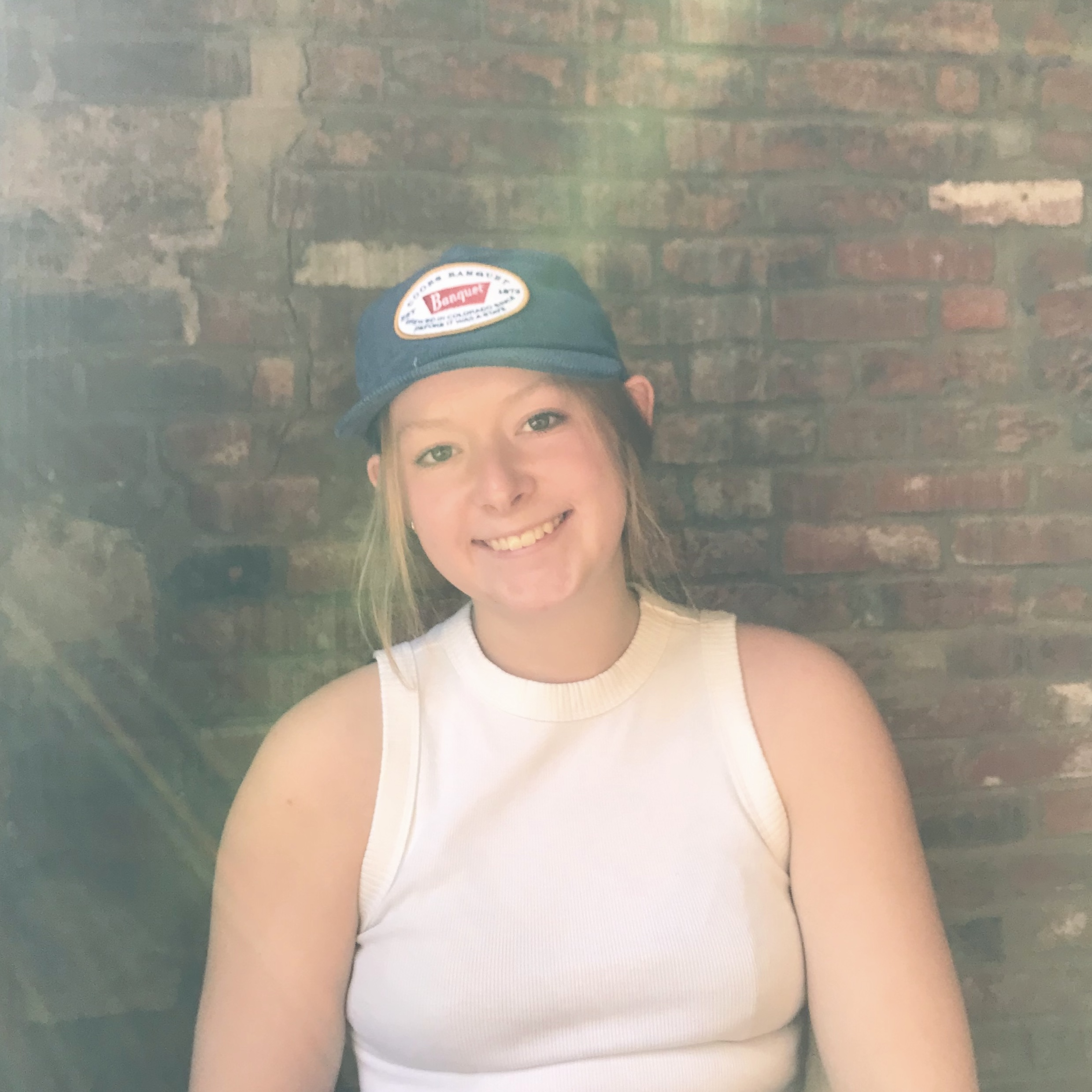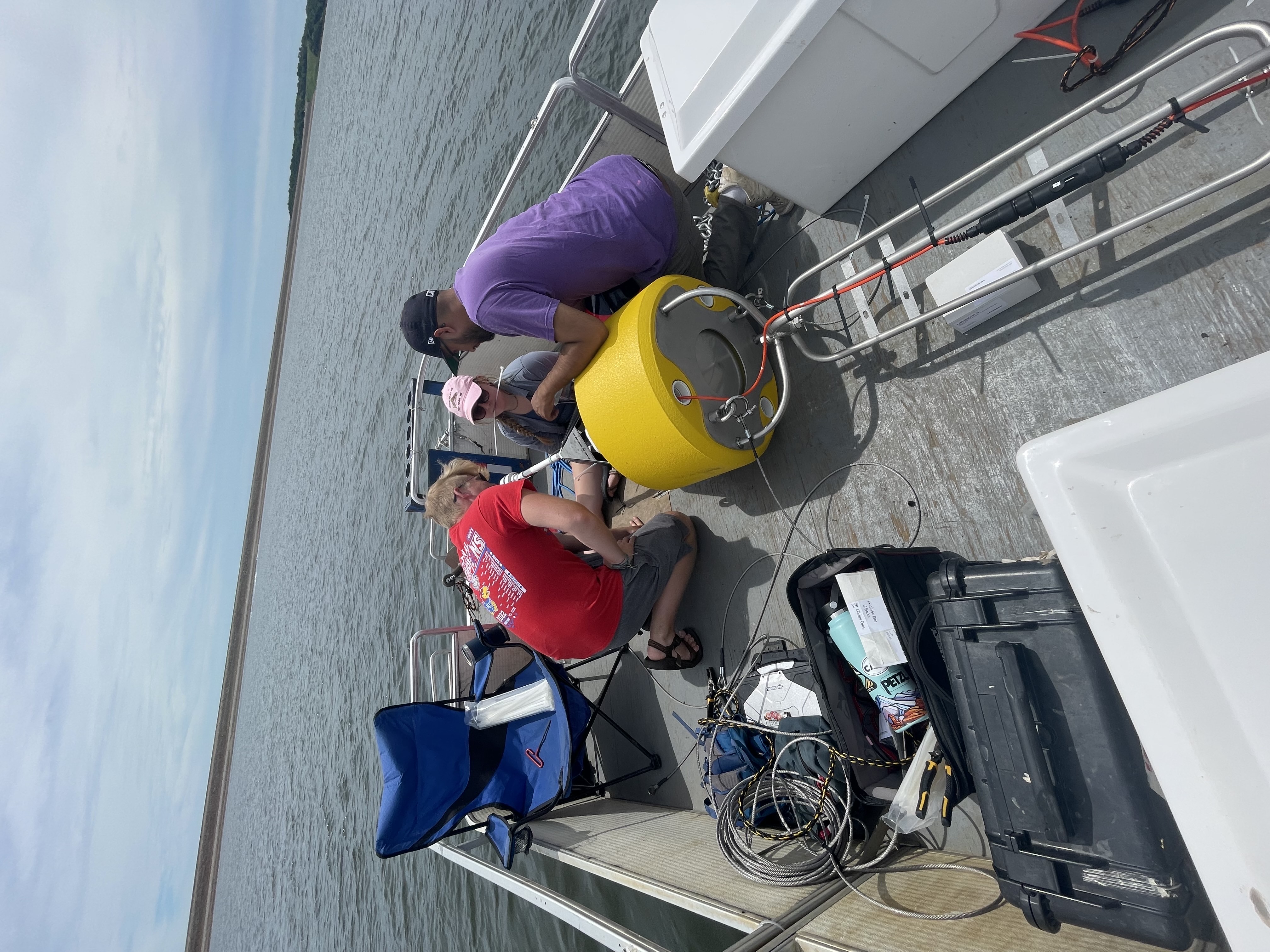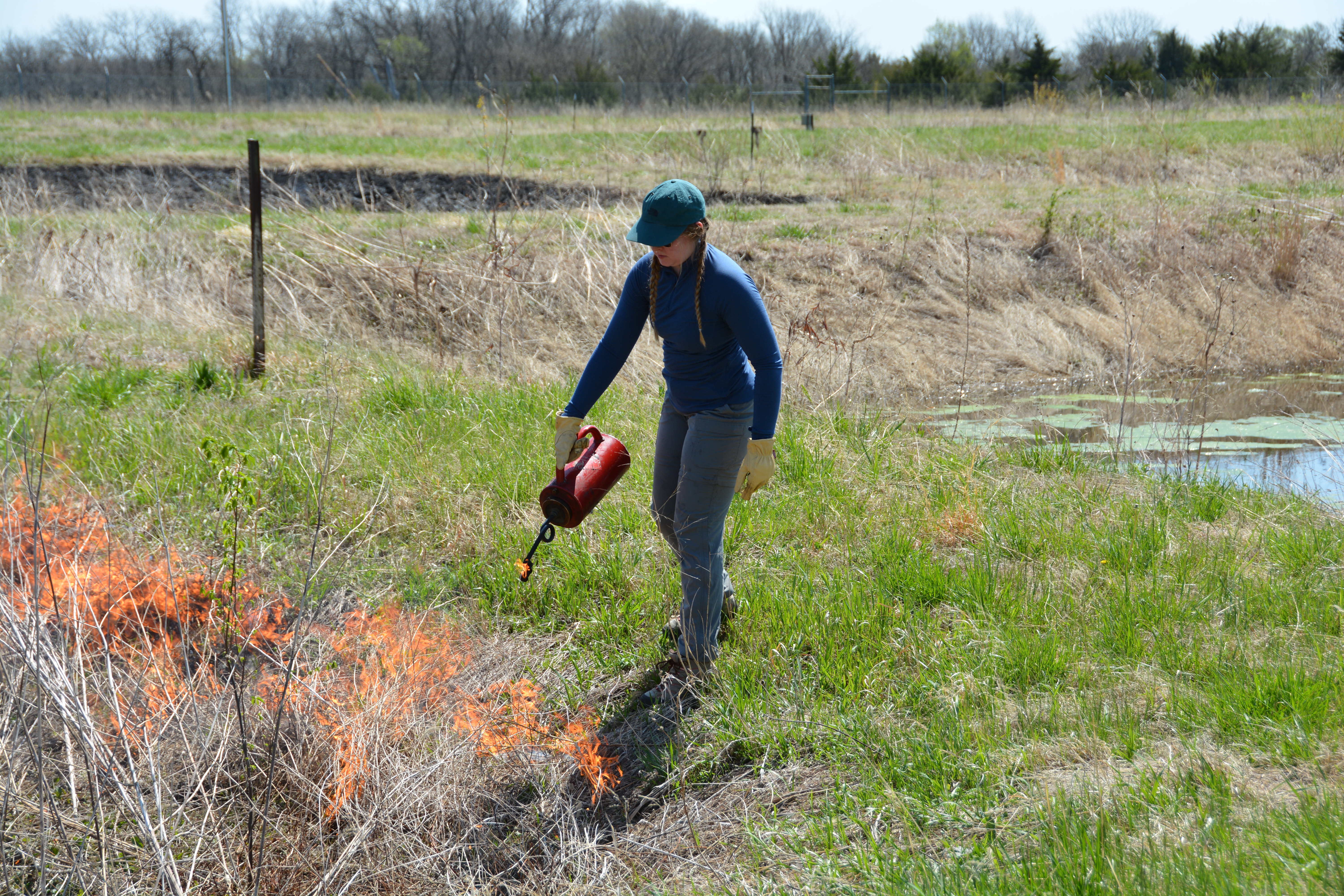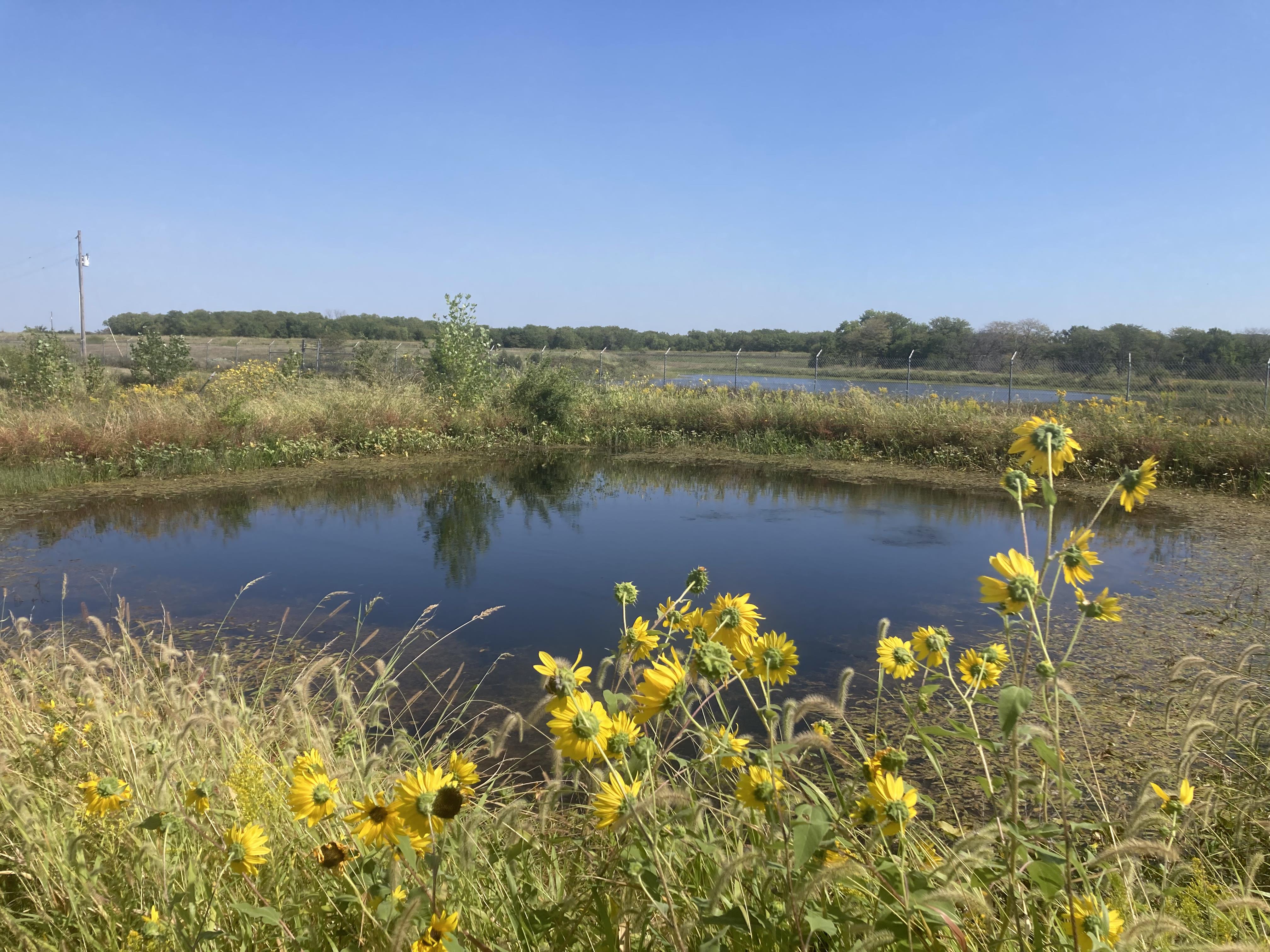Undergraduate Biology Student Researcher: Adeline Kelly

Adeline Kelly is Is a senior double majoring in Ecology, Evolutionary and Organismal Biology & Environmental Studies.
Adeline's Research at KU
“I work for Dr. Ted Harris. He studies aquatic ecology, specifically cyanobacteria. I am currently leading a project under his guidance where I'm looking at the effects of fire on water quality. Project title is ‘The Effects of Fire on Lake Phytoplankton Community Composition in Grassland Ecosystems’. Essentially, we're looking at how fire and the subsequent release of nutrients changes the water quality and therefore the composition of algae. We would expect to see that burning would release more nutrients and you would see more algal growth as a result of that.”

How did you become interested in doing this research?
“I initially started with the Bio Survey in January of 2020. I knew I wanted to go into resear
ch, and I started with Dr. Sharon Billings, who studies soil science. I was just looking to get involved in some way, and I knew that I had an interest in ecology, more specifically in nutrient cycling, which is why her work appealed to me.
Then of as a result of my hobbies and my love of spending time outside I also wanted to get into the aquatic side of things. So I applied for a job with Ted Harris last September […] and together we came up with an idea that combined my interest in fire ecology with his work in aquatic ecology.”
What does your research look line on a day-to-day basis?
“During the field season, we spend 2 to 3 days a week in the field. Some of that is for Ted’s work at the different reservoirs he monitors & some of that is for my work specifically. -- On those days, we spend a whole day in the field. We take a pontoon boat out on the water and collect the variety of data and look at a variety of different parameters like water temperature, PH, dissolved oxygen. We've got a really neat instrument called the Flouroprobe, which lets you look at algae concentrations right there in the field. We take water samples back to the lab with us and analyze them for Total Suspended Solids.
We go to the KU Field Station on the days we're working on my project. I'm working with a series of experimental ponds there and we have a pulley system that lets us sample the different ponds. We send the instruments across and lower them down [to collect samples]. We spend a lot of time processing samples afterwards [which includes] managing the data and getting the next trip to the field.
We're now more into writing season, so day to day for me that looks like compiling all the data that I have collected from the summer. I'm now starting to write a manuscript I hope to have published before I graduate in May.”
How do you adjust your water samples to reflect burn conditions?

“I'm working with one of the Ponds series [at the KU Field Station]. I think the ponds are .1 hectare each. We're working with eight of the ponds and we've got four burned & four control ponds. [To start] we filled them all halfway then we took a drip torch, and we burned the banks of four of the ponds. Then all of the nutrients and charred material washed into those ponds and then we filled all 8 the rest of the way.
We sampled the day before we burned, we sampled immediately after burning, and then we sampled like three days afterwards they were full. We've been sampling monthly from there.
It's one of the first experiments that Ted and I have seen that's actually using a replicated system and looking at the direct impacts of fire. Most of the literature on this topic is, “Hey, this really big fire happened, and it was close to this lake, and we saw an algae bloom afterwards.”
Have you made any discoveries or findings?
“I just plotted up the dissolved nutrient results yesterday and we see that burning does release nutrients. Specifically, soluble reactive phosphorous and a couple forms of nitrogen [which] increased fairly significantly immediately following burning and continue to diverge in the burn ponds over time.
As expected, we're seeing that burning releases nutrients. We haven't necessarily seen an increase in algal growth yet, so we're not 100% certain of where those nutrients are going. We think that they might be internally loading in the cooler water at the bottom of the ponds. We're going to sample again in October once the weather cools down a little bit, because once those that stratification pattern changes and the lakes turn over, we might see that those nutrients that loaded at the bottom are present higher up where we've got more light and we might see a bloom then.”
What did you find more challenging about doing your project?
“When I initially started with the Kansas Biological Survey back in 2020 [...] it was second semester my freshman year. It's tricky to break in to research that early because there's a fairly big learning curve. I went from being in 100 level lab courses to working with the state of the art lab technology but I think having that exposure early on has made me more comfortable in the field. One of the hardest parts is just trying to come up with a project design on your own, everything that goes into that and the proposal writing and trying to find funding for it.”

"Keep going, you know, keep trying for it and you're not going to know everything right away. I feel like the more I learn, the more I realize I don't know. It's okay to be in over your head. It's okay to be overwhelmed. You just have to ask for help and know that, like, there's going to be a learning curve, but you'll figure it out at some point."